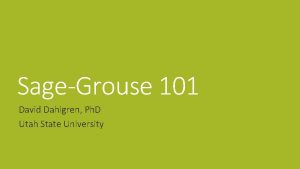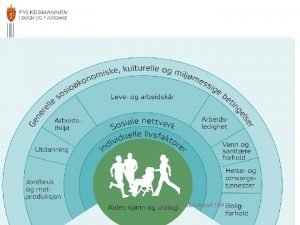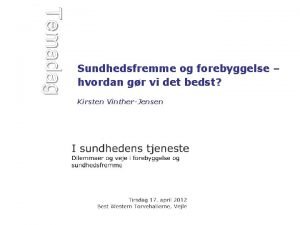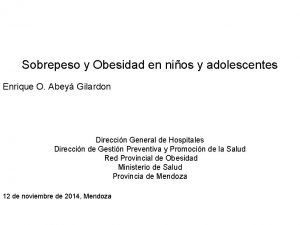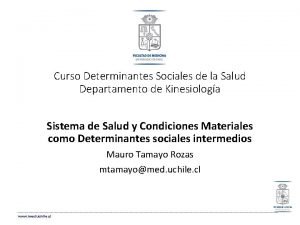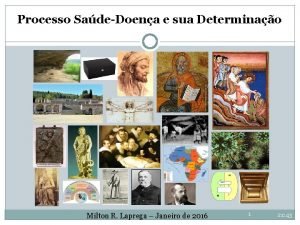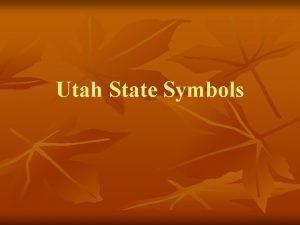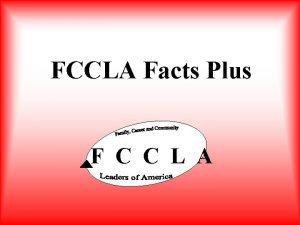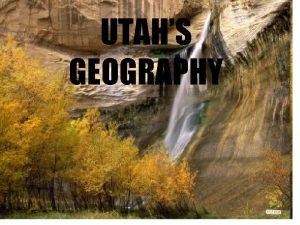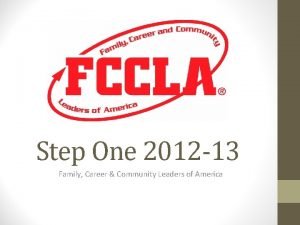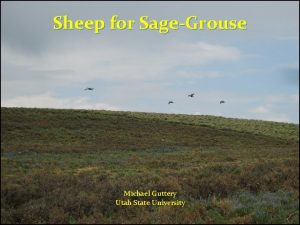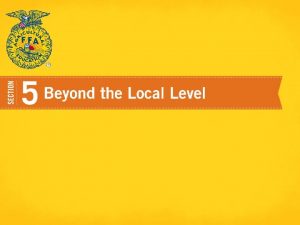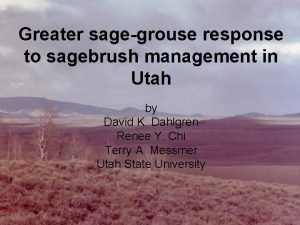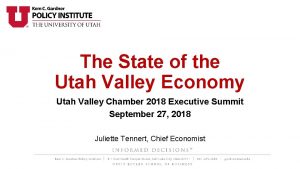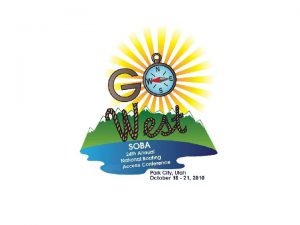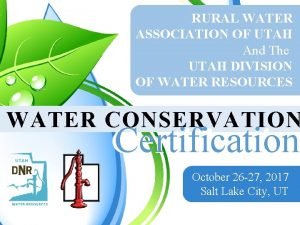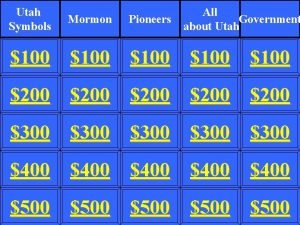SageGrouse 101 David Dahlgren Ph D Utah State















- Slides: 15

Sage-Grouse 101 David Dahlgren, Ph. D Utah State University

Life Cycle

What’s the Big Deal?

Threats Habitat Loss and Fragmentation (Number 1) energy development, infrastructure, conversion to cropland, urban/ex-urban development, wild fire (invasive grasses), conifer encroachment Habitat Degradation Improper grazing (livestock, wild horses/burros), drought, invasive plants

Seasonal Movements

Habitat Characteristics Think MULTIPLE SCALES (1 st, 2 nd, 3 rd, 4 th Orders of Habitat) Shrub and Herbaceous: cover, height, density, composition, diversity

Percentage of Sagebrush on Landscape < 25% within 5 km of Lek = 0 25 -45% within 5 km of Lek = + & 45 -65% within 5 km of Lek = Variable, but mostly stable > 65% within 5 km of Lek = Stable and Increasing

Seasonal Habitat Characteristics Breeding (Pre-laying, Lekking, Nesting, Early Brood-Rearing) Summer (Late Brood-Rearing) Winter

Habitat Standards Sage-Grouse Habitat Guidelines (Connelly et al. 2000) Sagebrush Steppe vs. Sagebrush Semi-Desert “Local differences in conditions that affect sage grouse populations may occur and should be considered in conservation plans. ” (Conservation Strategies, page 981)

Stubble Height of Grass What about 7 inches? Doherty et al. 2014 and Author Response “Improper grazing (by domestic livestock and free-roaming horses and burros) can have negative impacts to sagebrush and greater sage-grouse at local scales. However, in 2010, the Service did not find that this was a principal factor affecting the status of the species. ” http: //www. fws. gov/greatersagegrouse/findings. php

Parker Mountain Story PARM 1998 – Parker Mtn. Grazing Association – Andy Taft 1998 – 2010: Radio Marked Female Sage-Grouse

Parker Mtn. : Chick Survival Grazing!!!!!

Parker Mtn. Population Model SY ASY λ = 0. 97 (SE = 0. 025) Take Home – !!!!!!STABLE!!!!! Post-Fledgling Survival (Juvenile- Hatch year Sept. March) (Yearling -Second Year) (Adult-After Second Year)

Parker Mountain Nest Site Veg Type Shrub Grass Forb % Cover 28% 7% 3. 5% Height 23 cm (9 in) 11 cm (4. 3 in) 7 cm (2. 75 in) Brood Site Veg Type Shrub Grass Forb % Cover 23% 11% 8% Height N/A N/A Population Characteristics • Average to above average Nest Initiation & Survival • Nest survival did not contribute to λ (popn growth rate) • 50+% Chick Survival (Highest Chick Survival in Literature) • Good Juvenile Survival Dahlgren et al. 2016 • Variable, but good Adult Survival Caudill et al. 2014 Guttery et al. 2013 • Below average Clutch Size • STABLE/GROWING POPULATION Dahlgren et al. 2011 Key Points • Large Intact Sagebrush Landscape • No Development (except Dirt Roads) • Below Habitat Guidelines • Historical and Continual Livestock Grazing (Sheep and Cattle)

Take Home Sagebrush on the Landscape Variability in Population Dynamics and Habitat Manage with input from Local Data and Partners
 David dahlgren
David dahlgren Sound walls for reading
Sound walls for reading Dahlgren og whitehead modell
Dahlgren og whitehead modell Dahlgren whitehead model
Dahlgren whitehead model Dahlgren whitehead
Dahlgren whitehead Dahlgren whitehead
Dahlgren whitehead Dahlgren e whitehead
Dahlgren e whitehead Dahlgren e whitehead
Dahlgren e whitehead Dahlgren whitehead model
Dahlgren whitehead model Dahlgren and whitehead 1991
Dahlgren and whitehead 1991 What is the utah state animal
What is the utah state animal Utah state university engineering
Utah state university engineering Utah state abbreviation
Utah state abbreviation Antonyms for fccla
Antonyms for fccla What is utahs state tree
What is utahs state tree What is the utah fccla state theme this year?
What is the utah fccla state theme this year?
